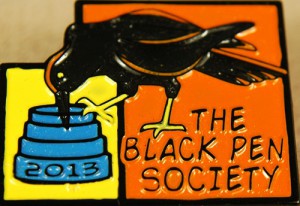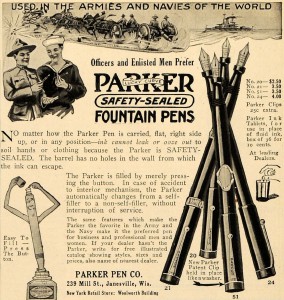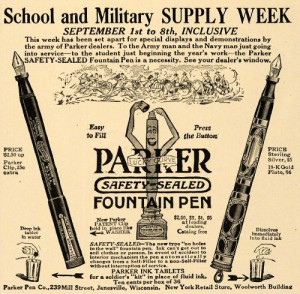Since letters have been invented, people have looked for ways to write them more swiftly. Scribes writing on clay tablets developed a more fluid form of writing that served as an early cursive in Mesopotamia.
The cursive writing we recognize today started developing in Europe the 16th century. Connecting letters with loops and tails seemed to grow increasingly more uniform across languages as education became more available to the citizens of those nations. Instruction was made more simply by the invention of textbooks printed using a special copper plate. Students could trace the preprinted letters with their quill pens. The resulting form of writing was simply referred to as copperplate.
For a great example of copperplate writing, look no further than the U.S. Constitution.
Copperplate served as both a simple, functional script and as something that could be made to look fancy for special ceremonial papers. As literacy was far from universal, and the need for legible handwriting was great, copperplate writing was considered something of an art form to be seriously studied. Reading and writing was no small task in the 17th, 18th and 19th centuries. Penmanship was critical.
The many forms of cursive writing in the centuries to follow evolved out of copperplate. Around 1840, a man named Platt Rogers Spencer believed it was important to make handwriting a true art form unlike those attempts that preceded him. A master craftsman in the art of handwriting Mr. Spencer developed his own variation of cursive that required dedicated training and skill to master its swirls and embellishments. The Spencerian method became the official writing style of government and corporate documents from around 1850 to 1925. Whole schools and textbooks were developed to teach this writing style around the country. The need for the super-flexible nibs most vintage pen collectors refer to today as “wet noodles” were essential for the modulating lines of Spencerian script that grew from extra fine to double and triple broad to accentuate a circle and add weight to the elements of each letter’s formation.
Today you can still see great examples of Spencerian script in classic century-old American brands such as Ford’s and Coca-Cola’s logos.
As elegant and beautiful as Spencerian script was, it was also time consuming and difficult to master. American business in the 19th century moved at a surprisingly fast clip by even today’s standards, and the Spencer method of writing was too slow for the needs of offices around the country. To keep up with the newly invented typewriter, secretaries, stenographers and many other white-collar workers needed a faster way to write.
In 1888, Austin Norman Palmer came to the rescue with his own method of writing. What became known as the Palmer Method caught on quickly for its legibility and ease of use. Most of the cursive writing we learned in school is, or was, based on the Palmer method.
Although Palmer method textbooks ceased publication in 1980, the very similar Zaner-Bloser method of cursive writing remains popular to this day. Developed in 1891, the Zaner-Bloser school realized the value in becoming a powerhouse in textbook publication for their handwriting and remain one of the top sources of handwriting instruction in schools across the country to this day.
In 1978, the D’Nealian handwriting method tried to breakdown the Palmer method into simpler steps to teach little kids how to write in cursive. It too remains popular, although my quick imperfect research into this piece seems to have found that the Zaner-Bloser method seems to dominate what is left of the industry to teach our youngsters how to write in cursive.
For much more detailed information about the history of handwriting and to learn how to master copperplate, Spencerian script, the Palmer Method and other forms of handwriting, visit The International Association of Master Penmen, Engravers and Teachers of Handwriting. The IAMPETH is an incredible resource for all of your handwriting needs.
Click here to be linked to their website: http://www.iampeth.com/.
Coming soon: Quick Tips for Taking Your Handwriting to the Next Level


 Shopping Cart
Shopping Cart







